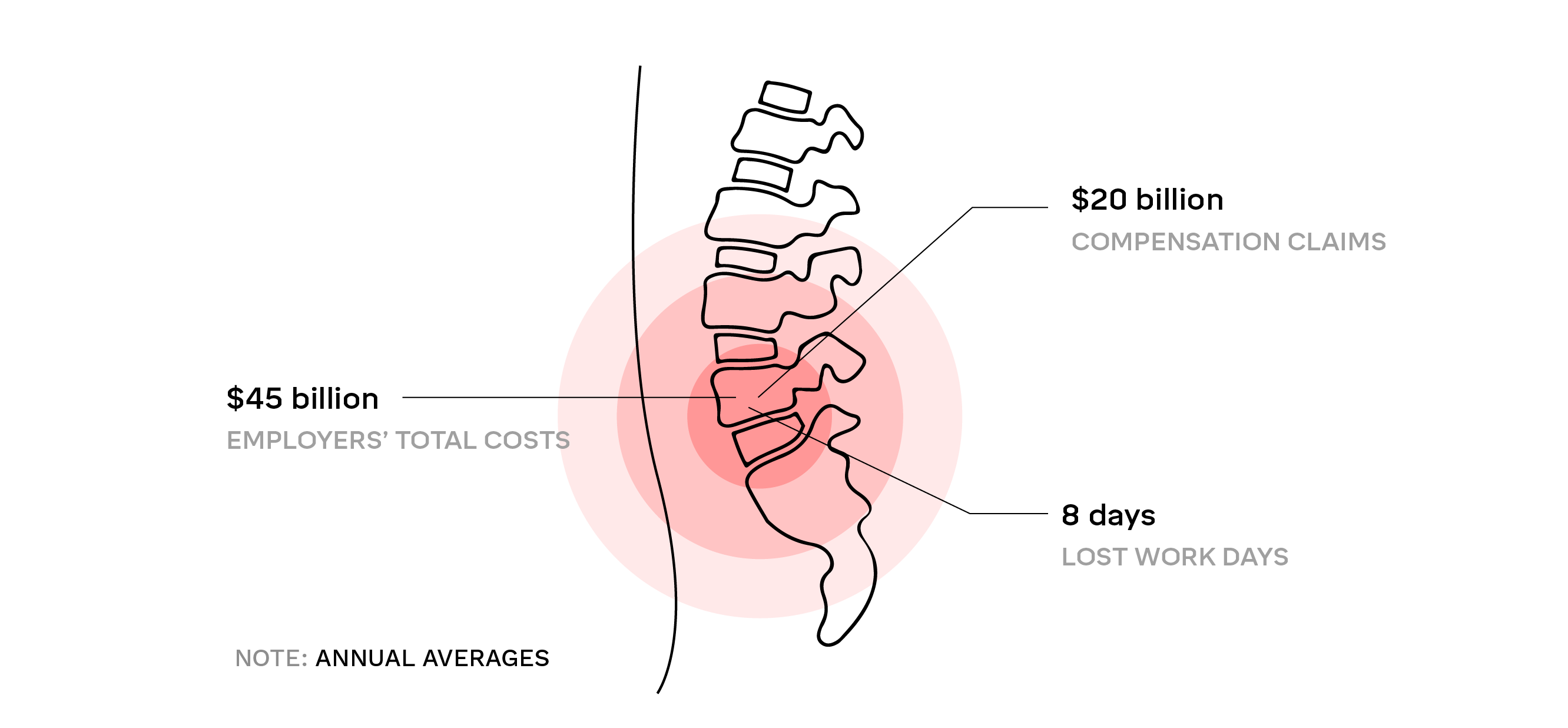The Costs of
Bad Biomechanics
August 22, 2020 |

You know the importance of workplace safety – you’ve set protocols, provided training, and supplied safety equipment to prevent injuries among your workforce. But have you considered the impact of how your workers move, day after day, while performing their job? If you haven’t examined the costs of bad biomechanics in your workplace, your employees and your bottom line likely have room for improvement!
Bad Biomechanics Hurt Everyone
Consider Max, a hard worker who unknowingly uses an awkward posture to perform a repetitive task day after day at work. Max’s bad biomechanics – the way his body moves to perform his mandatory job skills – places stress on his musculoskeletal system. The stress triggers muscle pain and in turn, Max regularly underperforms and occasionally misses work entirely.
Over time, Max develops a nagging injury known as a Musculoskeletal Disorder (MSD). He suffers from the injury, and so does his employer who is incurring workers compensation claim costs and lost productivity from an essential team member.
Max’s story isn’t unusual in the industrial workplace where overexertion on the job is common and employees are exposed to increased biomechanical risk. The costs, however, are significant.
A Look at the Costs

Bad biomechanics lead to Musculoskeletal Disorders – the most common and costly kind of workplace injury.
Musculoskeletal Disorders are the most frequent type of injury, accounting for 33% of workplace injuries. And they’re the most pricey too, with direct and indirect costs including:
- – Workers Compensation Claims:
- MSDs are estimated to account for one out of every three dollars spent on workers’ compensation. Employers spend as much as $20 billion a year on direct costs for MSD-related workers’ compensation.
- – Lost Work Days:
- Workplace MSDs account for 34% of all lost workdays, according to OSHA. Additionally, these cases require 38% more lost time days than the average injury with a median of 8 days away from work.
- – Lost Productivity:
- Indirect MSD costs, such as lost productivity, poor performance, and hiring and training replacement workers, can be up to five times the direct costs. This increases employers’ costs to more than $45 billion, according to OSHA.
Address Bad Biomechanics with Tech
The good news for employers is they can improve and avoid costly bad biomechanics in the workplace. Innovative technologies, like wearables, use biomechanical analysis to help reduce high risk motions and postures that lead to injury. Let’s look at how wearable tech could help an essential worker like our example, Max:
- – The employee is outfitted with a smart device that uses sensors and artificial intelligence to recognize unsafe biomechanics performed on the job, such as excessive bending, overreaching, and twisting.
- – Every time an awkward posture is performed, Max receives an automatic alert to increase his awareness and help permanently change his improper motions.
- – Management reviews data collected from the worker’s device and sees a pattern of high-risk postures; they use the insight to make a practical change in his work process.
- – After a few weeks of wearing the device, Max has significantly reduced his bad biomechanics – his pain has decreased and his performance at work has improved. A costly injury is avoided.
As you can see, tech-driven biomechanical analysis can play an integral part in a comprehensive workplace safety program. Insights gained from data often reveal the impact of bad workplace design on worker postures, and present opportunities for improvement to both workspaces and worker processes. Overtime, by improving workplace biomechanics, companies can reduce both injuries and the direct and indirect costs associated with them.
Haytham Elhawary
CEO & Cofounder, KINETIC
FEATURES
RESOURCES
2019 KINETIC © All rights reserved.